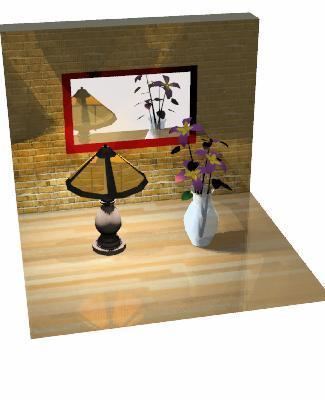 | ||
Reflection in computer graphics is used to emulate reflective objects like mirrors and shiny surfaces.
Contents
Reflection is accomplished in a ray trace renderer by following a ray from the eye to the mirror and then calculating where it bounces from, and continuing the process until no surface is found, or a non-reflective surface is found. Reflection on a shiny surface like wood or tile can add to the photorealistic effects of a 3D rendering.
Polished or mirror reflection
Mirrors are usually almost 100% reflective...
Metallic reflection
Normal (nonmetallic) objects reflect light and colors in the original color of the object being reflected. Metallic objects reflect lights and colors altered by the color of the metallic object itself.
Blurry reflection
Many materials are imperfect reflectors, where the reflections are blurred to various degrees due to surface roughness that scatters the rays of the reflections.
Glossy reflection
Fully glossy reflection, shows highlights from light sources, but does not show a clear reflection from objects.
